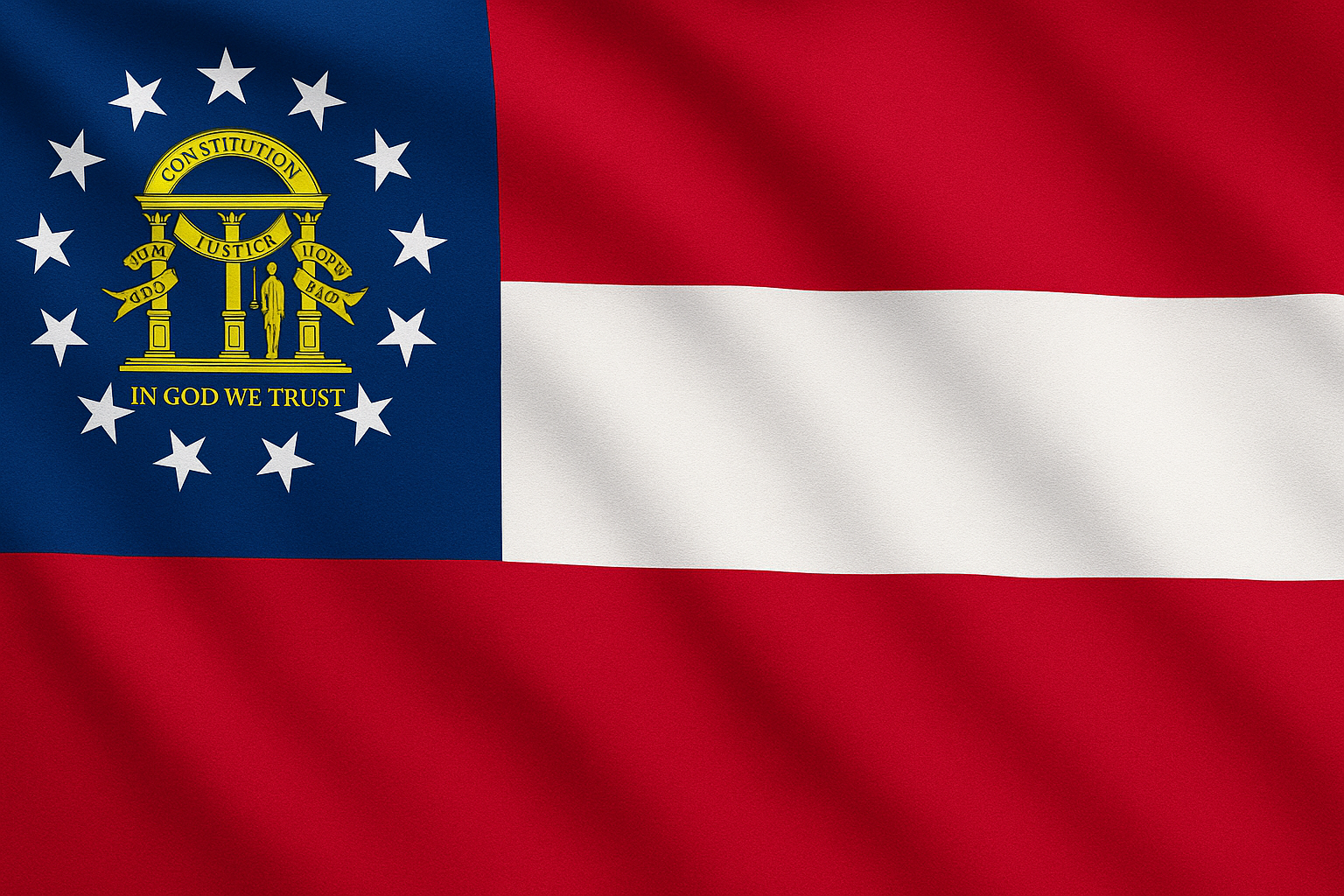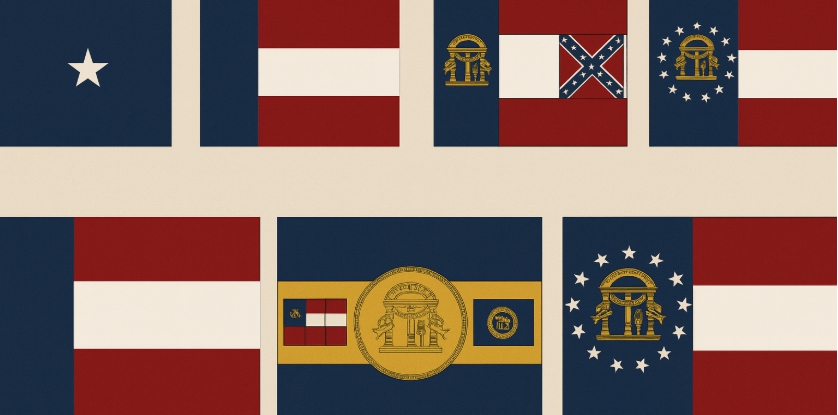
Georgia’s state flag has changed more than most, reflecting deep cultural divides and shifting political landscapes. This history reveals how symbols can unite — or divide — a people.-Editor’s Note:
A flag is one of the most important symbols a nation or state can possess since it unites individuals under a unified sense of pride and belonging. For some states, however, a flag is more than just cloth and color; rather, it causes debates. This idea can be seen in the United States, where each of the 50 states has its unique flag that reflects its distinct culture and past. While some state flags are instantly recognizable due to their bold, simple designs, many still rely on cluttered seals and outdated imagery that fail to resonate with modern audiences. Unlike many flags that remain static and unnoticed, Georgia’s has changed multiple times, often reflecting deep political and social tensions.

In 1861, Georgia did not have an official state flag. After the state seceded from the Union, the secession flag appeared to have a single white star on a blue background. In 1879, state senator and Confederate veteran Herman H. Perry designed the first state flag of Georgia. The flag had horizontal red and white stripes with a blue vertical bar on the left side. Perry, who served in the Confederate army during the Civil War, took the inspiration for the design from the First National Flag of the Confederacy, also known as the “Stars and Bars.” This is because he intended to honor the soldiers who had fought in the Civil War. Furthermore, the Southern region of the United States was still recovering from the aftermath of the Civil War, and many white Southerners sought a symbol that reminded them of their past and demonstrated their ability to resist Northern influence. Therefore, the flag became a sign of Southern pride and a link to life before the war by becoming a visual expression of Georgia’s cultural memory.
Due to the fact that the first state flag lacked state symbols, the Georgia General Assembly modified the state flag by adding the coat of arms of the State in 1902. However, the coat of arms in the flag had different variations of designs. After several minor changes, the official design of the coat of arms was embroidered on the flag in the 1920s. This change happened during the Progressive Era, when Georgia and other Southern states were updating roads, schools, and laws, but still kept racial segregation.
The Georgia state flag stayed unchanged until 1956, when Georgia made a big change to its state flag, after the decisions of Brown v. Board of Education in 1955. A Confederate battle flag, featuring a red square with a blue “X” and white stars, was added during a time when the U.S. Supreme Court had just ruled that schools must be desegregated. This was because there were many disagreements about desegregation among many white leaders in the South. Adding the Confederate symbol was their way of showing they disagreed with the federal government and wanted to hold on to old Southern traditions, including segregation.
 From 1996 to 2001, Georgia’s flag became a big issue again, especially during the Atlanta Summer Olympics in 1996. With individuals from all over the world visiting Georgia, many started asking why the state’s flag still had the Confederate battle emblem, a symbol that connected to slavery and racism. There were complaints from the civil rights group that the flag did not represent all Georgians. Others defended the flag, saying it was part of Southern history, causing an ongoing debate.
From 1996 to 2001, Georgia’s flag became a big issue again, especially during the Atlanta Summer Olympics in 1996. With individuals from all over the world visiting Georgia, many started asking why the state’s flag still had the Confederate battle emblem, a symbol that connected to slavery and racism. There were complaints from the civil rights group that the flag did not represent all Georgians. Others defended the flag, saying it was part of Southern history, causing an ongoing debate.
In 2001, therefore, Georgia’s governor, Roy Barnes, helped create a new version of the state flag to replace the one with the Confederate battle emblem. The new flag showed a row of smaller historical flags, including the Confederate one, and placed Georgia’s seal in the middle. The goal was to design the flag so that it moves away from the old symbol but still shows Georgia’s history. However, many individuals complained that the flag design was too complex, causing a political fallout. Soon after, Roy Barnes lost the next government election, and the flag design was changed.
Finally, in 2003, Georgia adopted a new flag that looked more like the original 1879 version, with red and white stripes and a blue section in the top left that held the state’s seal and the phrase “In God We Trust.” This version was chosen through a statewide vote, and most people agreed with the change. The design tried to honor Georgia’s history while also being more inclusive and less controversial. Today, this flag is still used and is seen by many as a compromise between tradition and unity.
<Jaymin Park Student Reporter>Palos Verdes High School jpola0412@gmail.com






